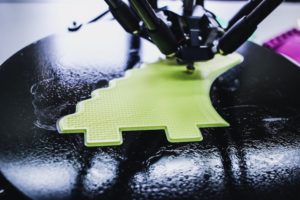Come join us for a class! Tickets are available on Eventbrite.
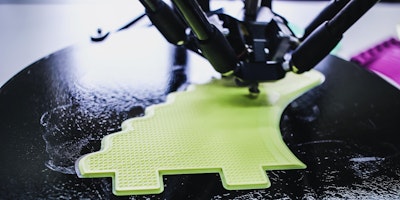
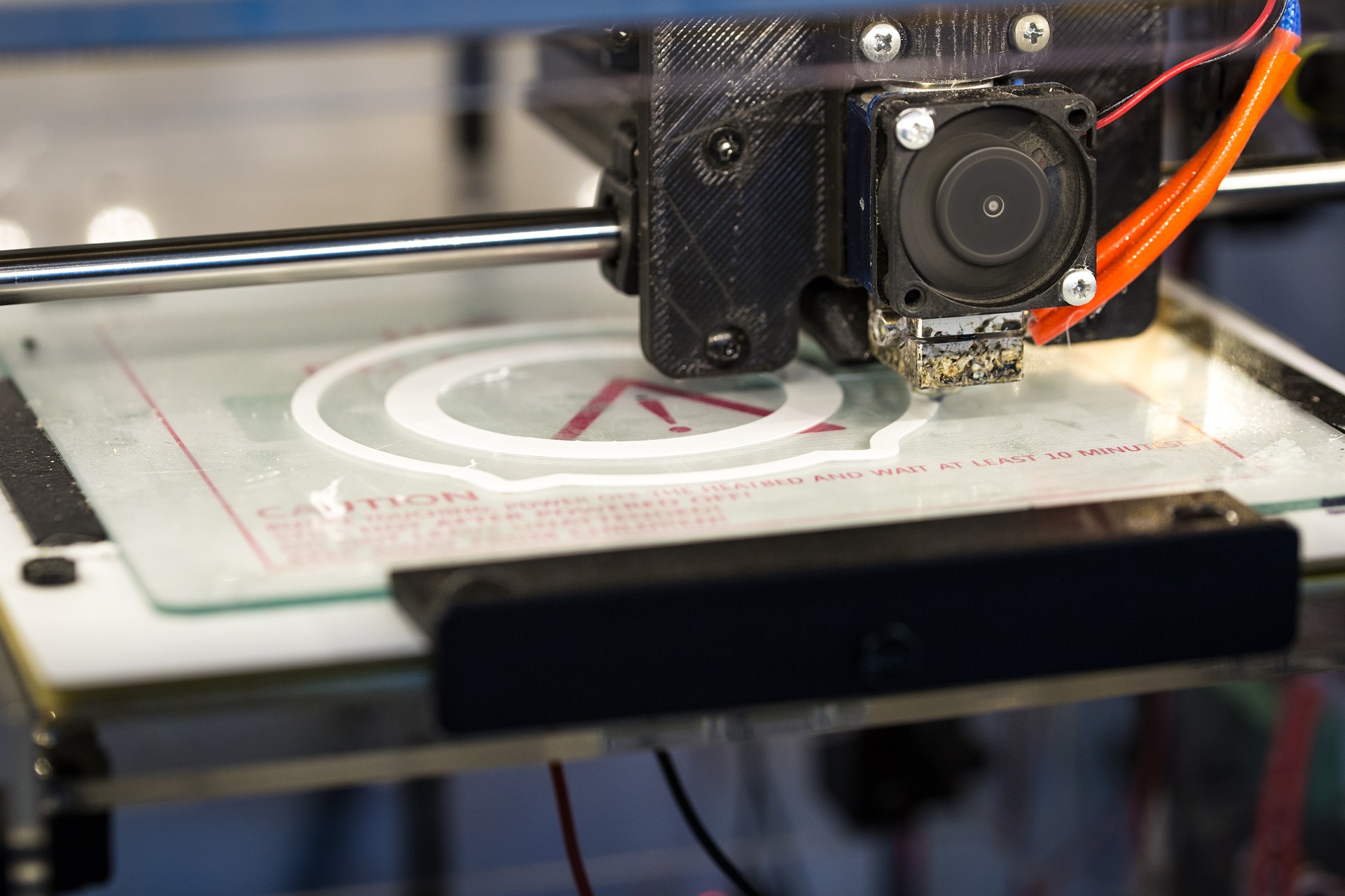
Come join us for a class! Tickets are available on Eventbrite.


Come join us for a class! Tickets are available on Eventbrite.
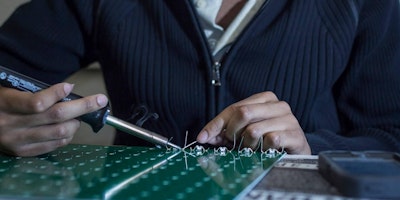
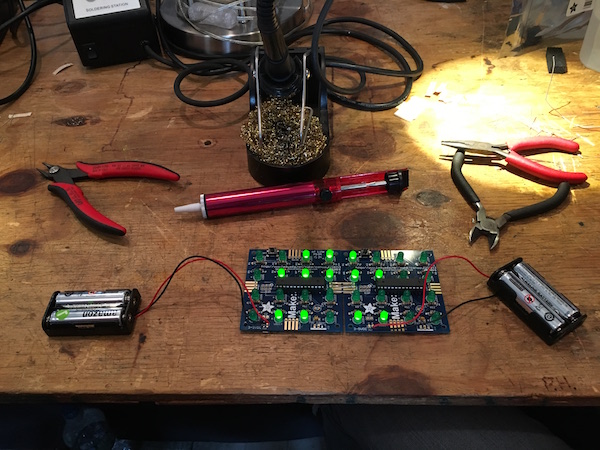
I recently published two guides for new electronics projects around tracking your social media stats. The first is a YouTube subscriber counter that resembles a Play Button Award and shows your subscriber count across two seven segment displays behind the framed paper.

The second is very similar but tracks multiple stats with the same board, and has more displays connected.
Both projects use the NodeMCU ESP8266 microcontroller and LED backpacks from Adafruit.
Next Saturday (27 Jan) NYC Resistor’s knitting guild, PKPTransistor, will be having our first annual Midwinter Yarn Swap. Cast off some of your old yarns, hook up with some new yarns, and get cozy with your fellow yarn hoarders!
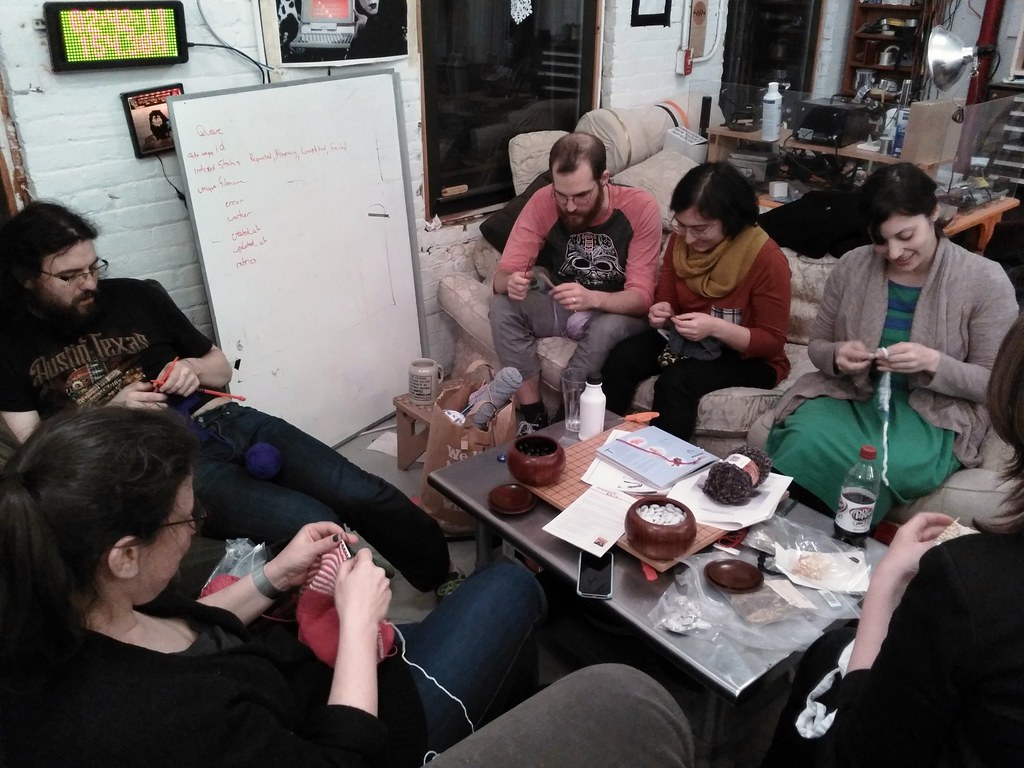
Bring your stash to trade and share while enjoying good company, mulled apple cider, and hot choclety. We’ll put some Back to Back Challenge videos on the big screen and talk shop. Knitters, crocheters, spinners, dyers, if you do it with yarn we’d love to have you. And if you have ideas for stash-busting projects, bring them along.
January 27
2pm – 5pm
NYC Resistor
87 3rd Ave. in Brooklyn
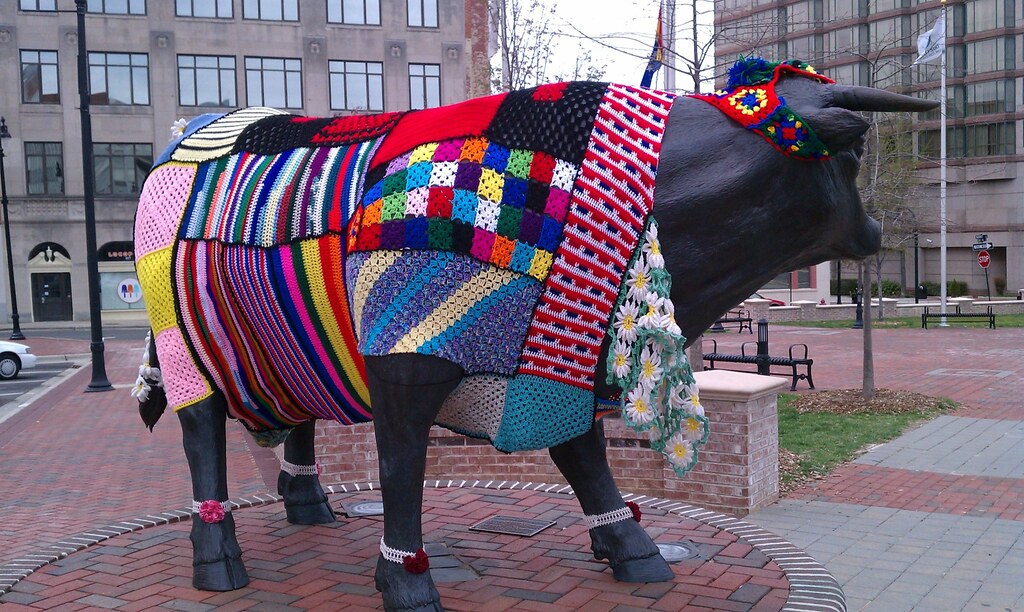
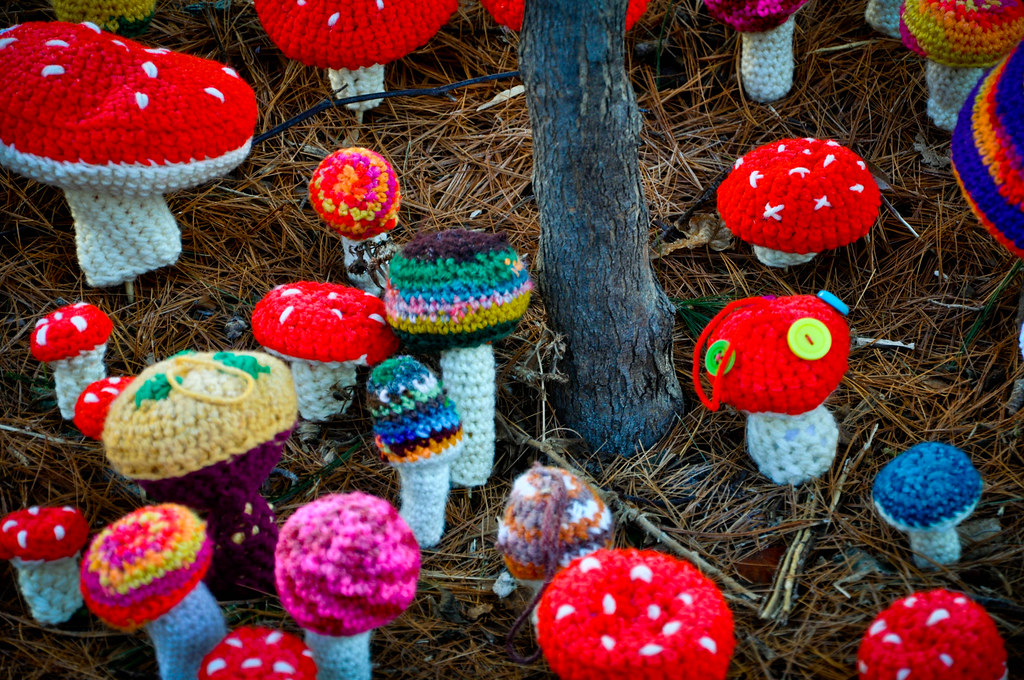
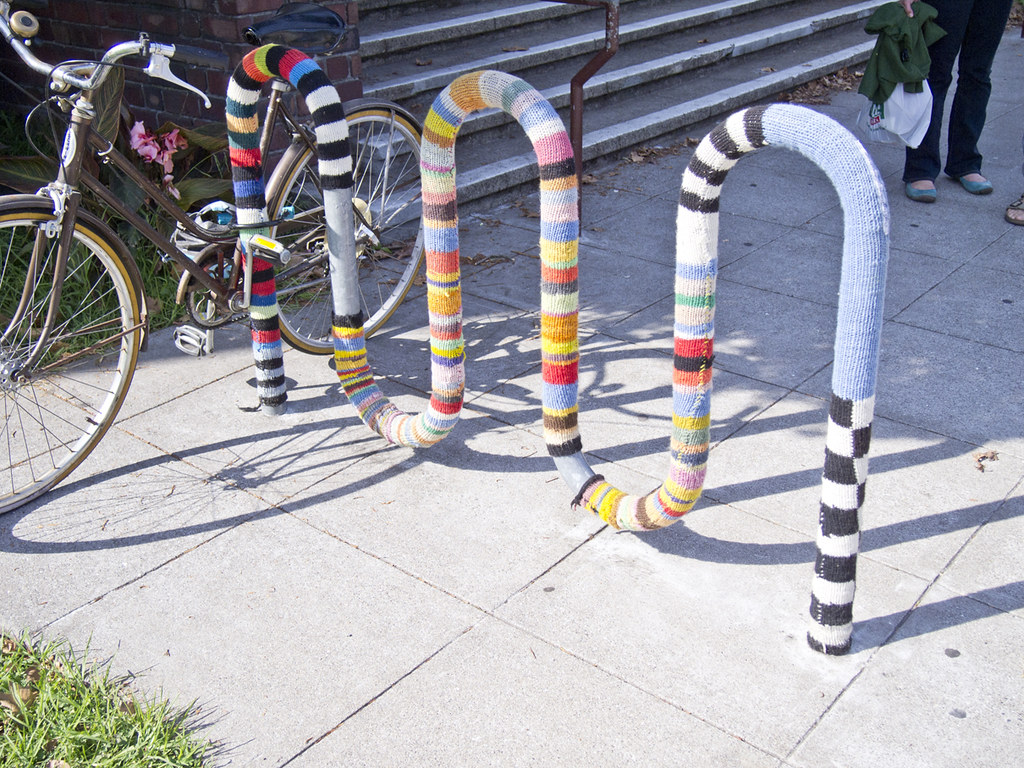

Photos by Trammell Hudson, Sarah Nichols, Ahd Photography, Sherri Lynn Wood, and Eli Carrico
We asked Adelle and Matt about their camera-based musical instruments. Here’s what they said.
What’s a camera-based musical instrument? Basically, it’s two cameras facing upwards, about a foot below a player’s hands. When they move their hand, it’s converted into different types of notes, sound effects and volumes, to create an expressive performance.
We made 3 of these. The form was shaped like a musical soundwave: we prototyped it on the laser cutter, and eventually got it CNC milled.
This is part of the CES Intel Keynote pre-show performance. It was the opening of the show, to show off the instruments’ nuance and control before the concert gets too big. The middle instrument was piano sounds; the one on the right was synths and electronics; the one on the left was chords and atmosphere. The show opened dark: the performer, Kevin Doucette, used his hands to bring up the lights on the instrument as well as the synthesisers, then waved his hands to switch keys on a virtual keyboard. Kevin played the Killers’ “Are we human or are we dancers?”.
In this instance, the performer is wearing gloves with sensors in them, and is using finger bends to trigger notes. Yes, it looks like a theramin – but it’s way cooler and has blinkenlights. But seriously, the LEDs are there to show the musician where they are on the instrument and the types of notes that they’re playing (ed: but they’re still cool).
We built this instrument to use the cameras (they’re good at doing fast hand tracking and depth); we added the LEDs because if you have an invisible instrument you don’t know where you are, and the LEDs give feedback to train your hand in space.
Here’s the lasercut and CNC versions side by side: here, we’re doing LED tests.
(insides of the camera-based instrument)
Here are the insides: the frame, the LED controller and the acrylic housing around them. The cameras are Realsense. There are two programs (developed by Nerdmatics) running on linux in the back end, and TouchDesigner to control the lighting.
Here are the guts of the instrument
Here are the cameras
And the camera teardown
Come talk to us about this project!
We asked Bonnie and Widget what to do at craft night if you don’t have a project. Here’s their list…
You could do things that have nothing to do with projecting: sit on your own surfing the internet or playing farm games (Hi Mikael!), sit and talk to people, grab a book from the library, ask people about their projects, offer to help with projects, or offer to help clean (which is a great way to make us love you).
More traditional projects: you could spelunk in thingsgiving (our pool of electronics supplies and mysterious arcane objects, aka a treasure hunt) and see what you could make. You could learn to solder. You could knit, or learn to knit (we have yarns and needles on hand), you could grab scraps of fabric and play around with a sewing machine. You could paint your nails: we have lasercut nail art blocks, some of which are very geeky (ed: I love the one with circuits). Or you could video DJ on our projector.
You could draw – we love artists. Or try out the 3D printers (or help get one of them working again). Mill your own PCBs on the othermill. Or you could bring things that you want to fix, and fix them.
Craft nights are Mondays and Thursdays – check out our Participate page.
So NYC Resistor now has a public slack channel. Why? Because we have awesome chats with people who come into the space for open nights and classes (see participate if you want to join in), and we want to extend this to the interwebz.
We’re here: https://goo.gl/bxJLGf (*). We’ve got the usual general and random (sometimes very random) channels, and new channels for knitting (pkpresistor), microcontrollers and more. Come join us!
(* if the slack link doesn’t work, contact [email protected] to get added)
[Cross-post from Bonnie Eisenman’s blog at https://blog.bonnieeisenman.com/projects/clojure-puzzles/. Bonnie is often found at the NYC Resistor craft nights]
I spent the last week learning Clojure and generating jigsaw puzzles as part of my one-week programming retreat at the Recurse Center.
Why jigsaw puzzles? I was motivated by two things: first, I wanted a good-sized language-learning project. Secondly, I was heavily inspired by the amazing, beautiful, intricate jigsaw puzzles produced by Nervous Systems and wanted to experiment with similar-ish generative methods. (I’m a sucker for generative things and hadn’t played with generative algorithms too much before.) If you want a crazy cool puzzle, seriously, go buy one from Nervous.
I think they turned out well!

Because I have access to NYC Resistor’s laser cutter, the obvious thing to do was generate SVGs which I could then laser cut. If you haven’t worked with SVG before, it’s an XML-based format for describing vector graphics. It’s pretty easy to generate “by hand”.
Here is what an SVG looks like, if you open it up with a text editor:
<svg width="100" height="100">
<circle
cx="50"
cy="50"
r="40"
stroke="green"
stroke-width="4"
fill="yellow"
/>
</svg>
This produces a yellow circle, centered at (50, 50), with a radius of 40, and a four-pixel green outline. You can view an SVG file in any web browser, or edit it in an editor like Inkscape.
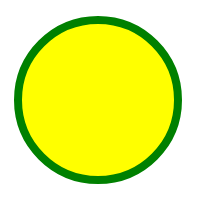
See? Easy-peasy.
I started by generating a “classic” jigsaw puzzle shape, and figuring out how to tile it.
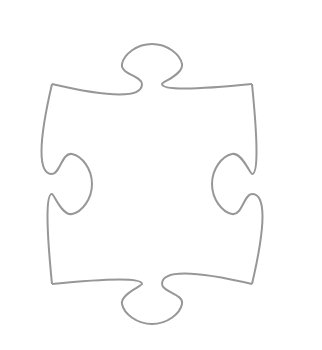
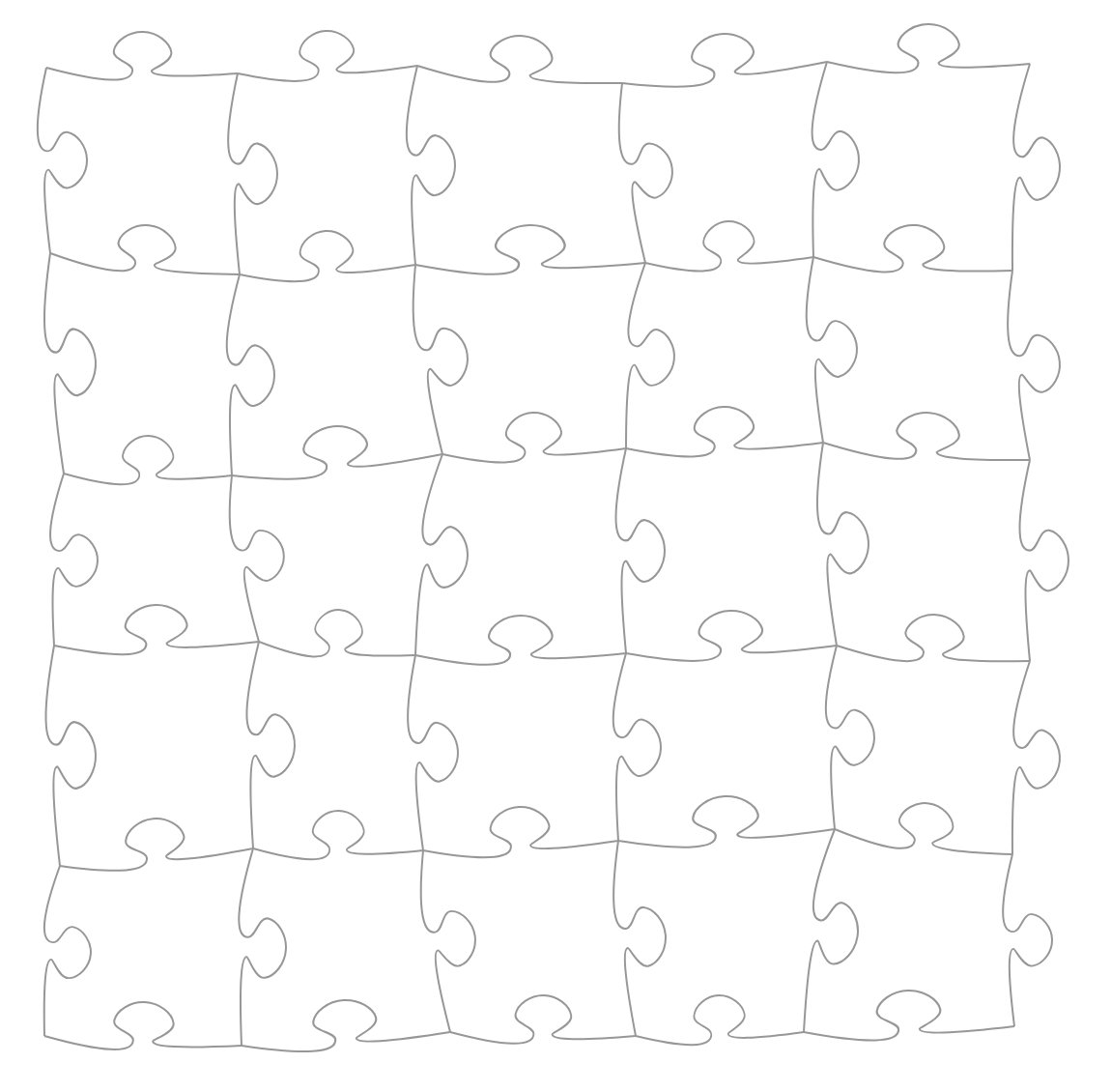
But I wanted something more interesting than just a grid of similar puzzle pieces! My next step was to use a Voronoi diagram to draw more irregularly-sized polygons around “seed” points. At first this created some amusing failures:

Oops. This is what happens when you draw points at (x, x) instead of (x, y). Let’s fix those coordinates.
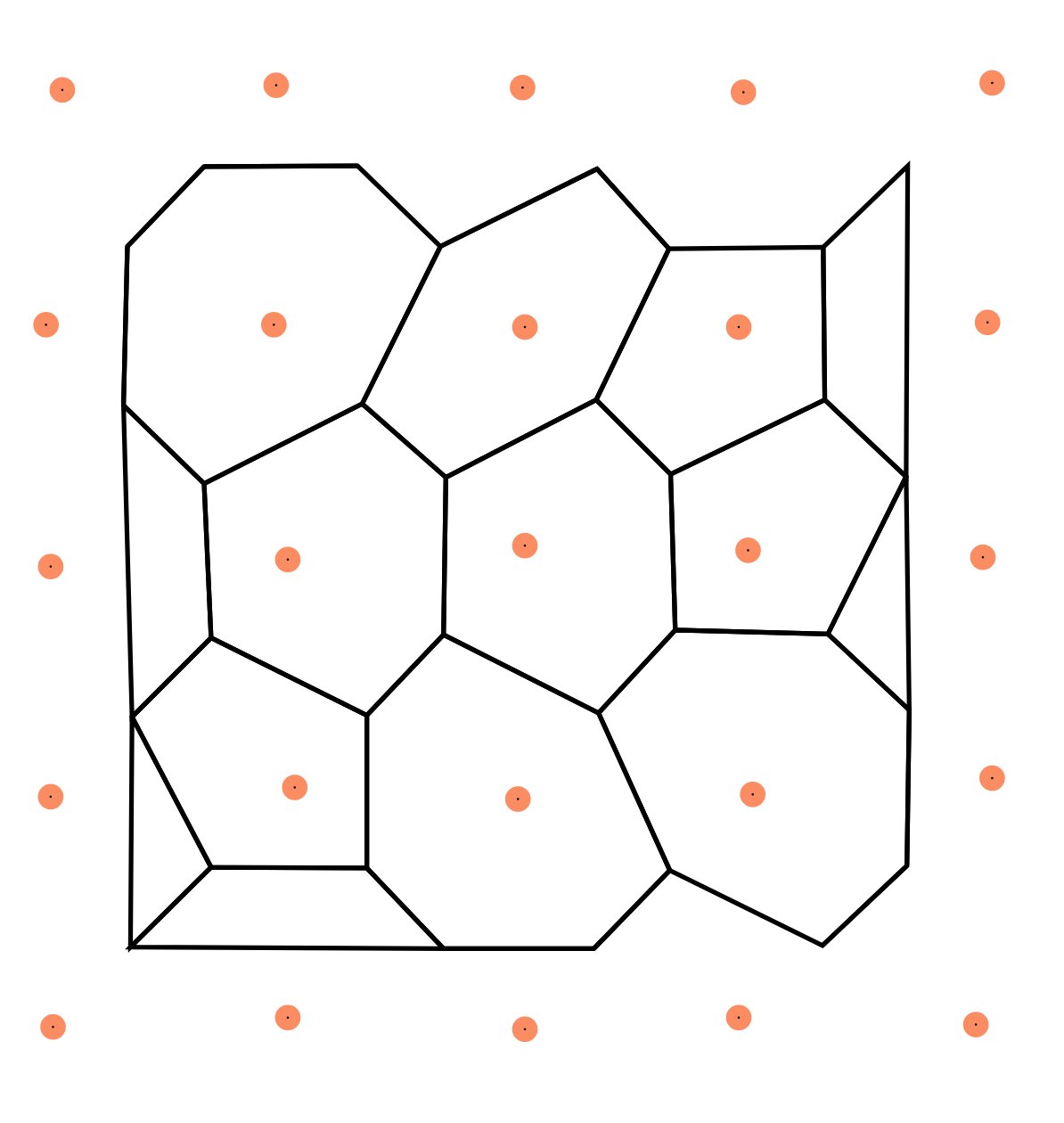
If we replace those straight lines with puzzle-piece edges, we get something that starts to look like a more interesting puzzle. There are still obviously flaws to be ironed out here (e.g. edge overlap).

I wanted to make more novel puzzle piece shapes, though, so I turned to the SVG path type. You can draw Bézier curves in SVG pretty easily:
<path d="M 0 0 C 0 -100 50 -100 50 0 S 100 100 100 0"
stroke="blue"
fill="transparent"
transform="translate(0 400)"/>

OK, here’s what it looks like when we replace our puzzle piece shape with some random-ish curves:
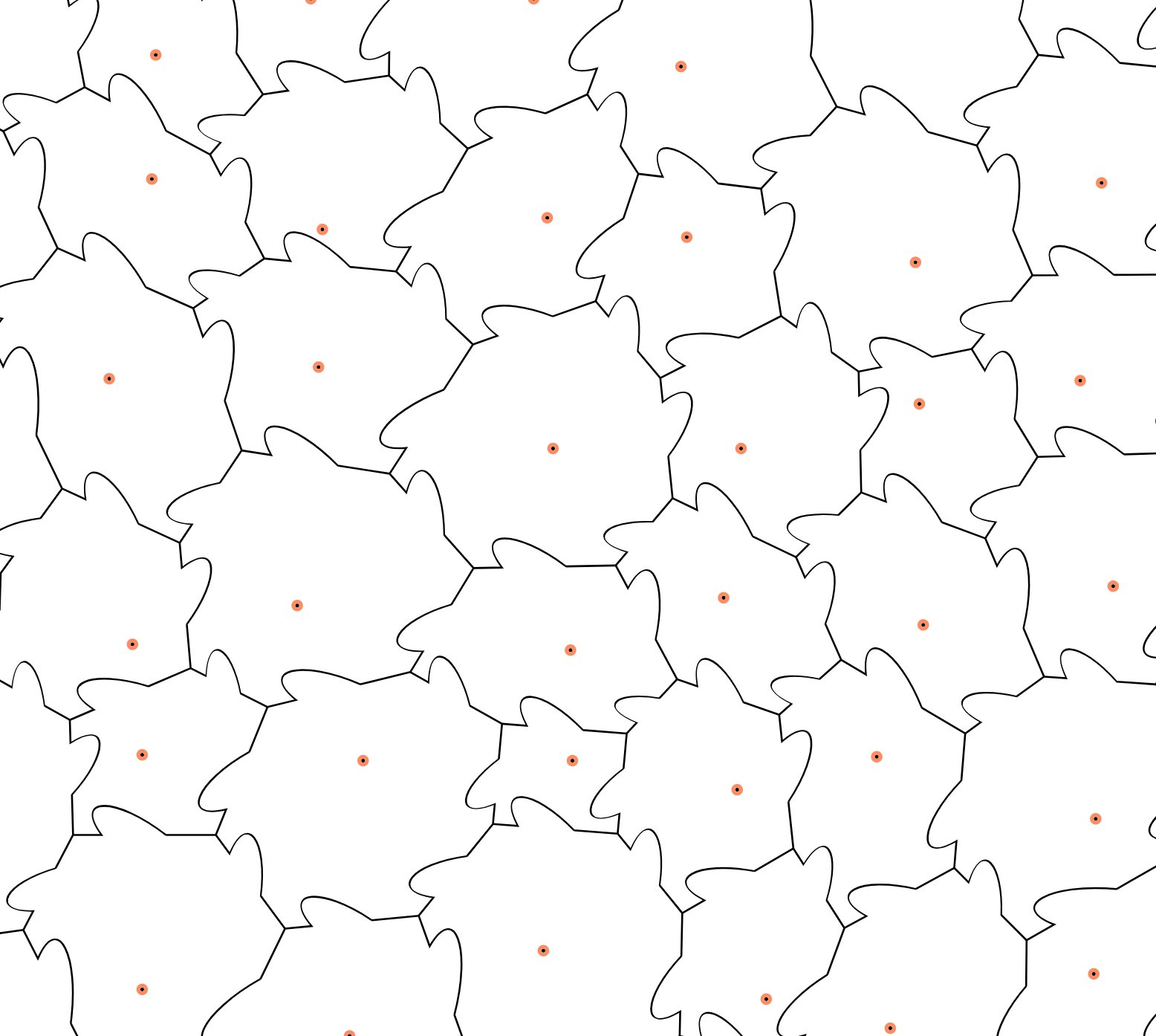
Add more curves and it gets even better!
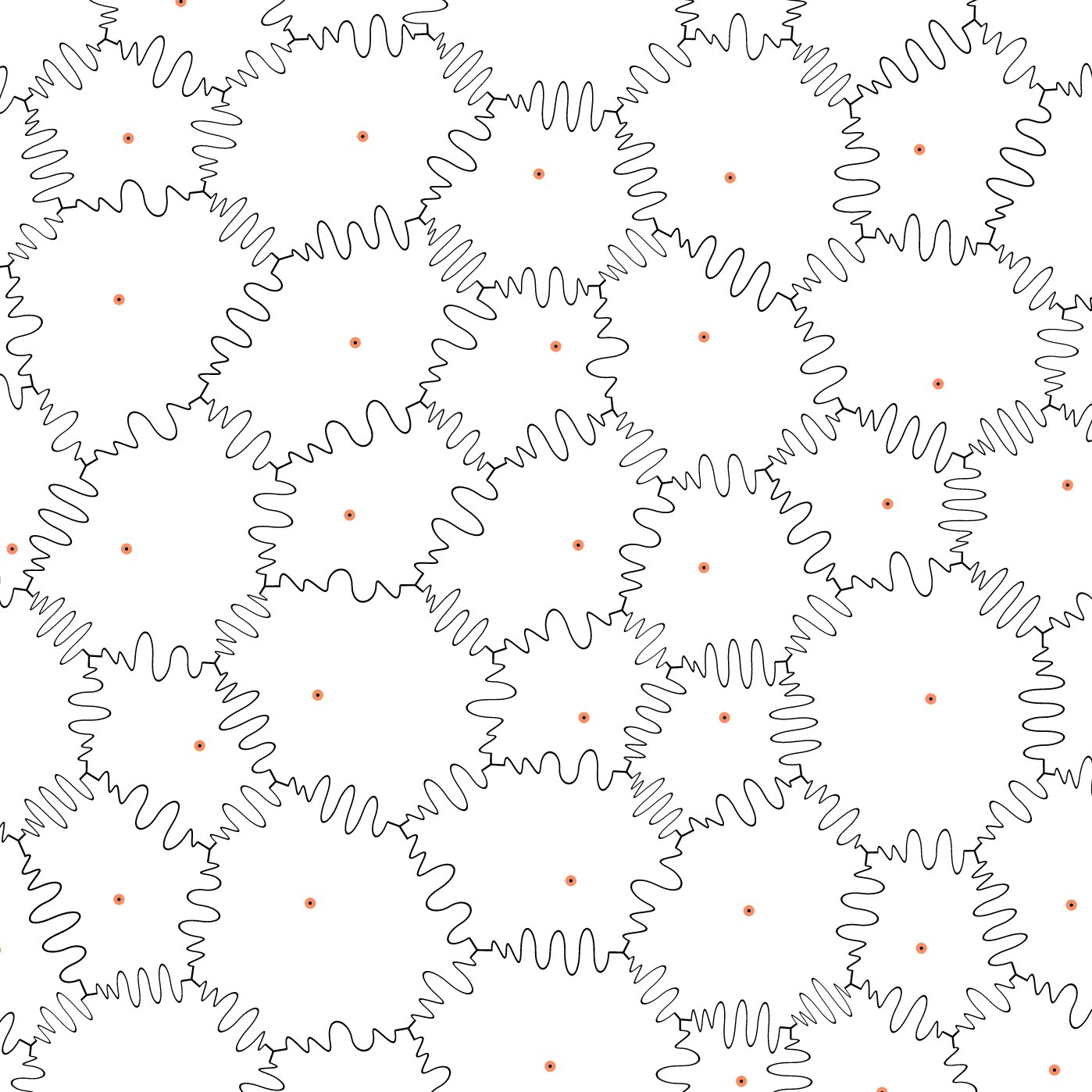
I also experimented with variations on how to place the seed points for my puzzle generation. Here’s one that’s based on a circular point distribution.

Now I had some monstrously-irregular puzzle pieces to play with. Cool! I wanted to take it one step further by implementing whimsy pieces. In jigsaw jargon, a whimsy piece is a themed, recognizably-shaped puzzle piece. They might be butterflies or people or letters or…you name it!
I modified my puzzle-generator to clear space for a whimsy piece, first testing it with circular whimsy pieces.
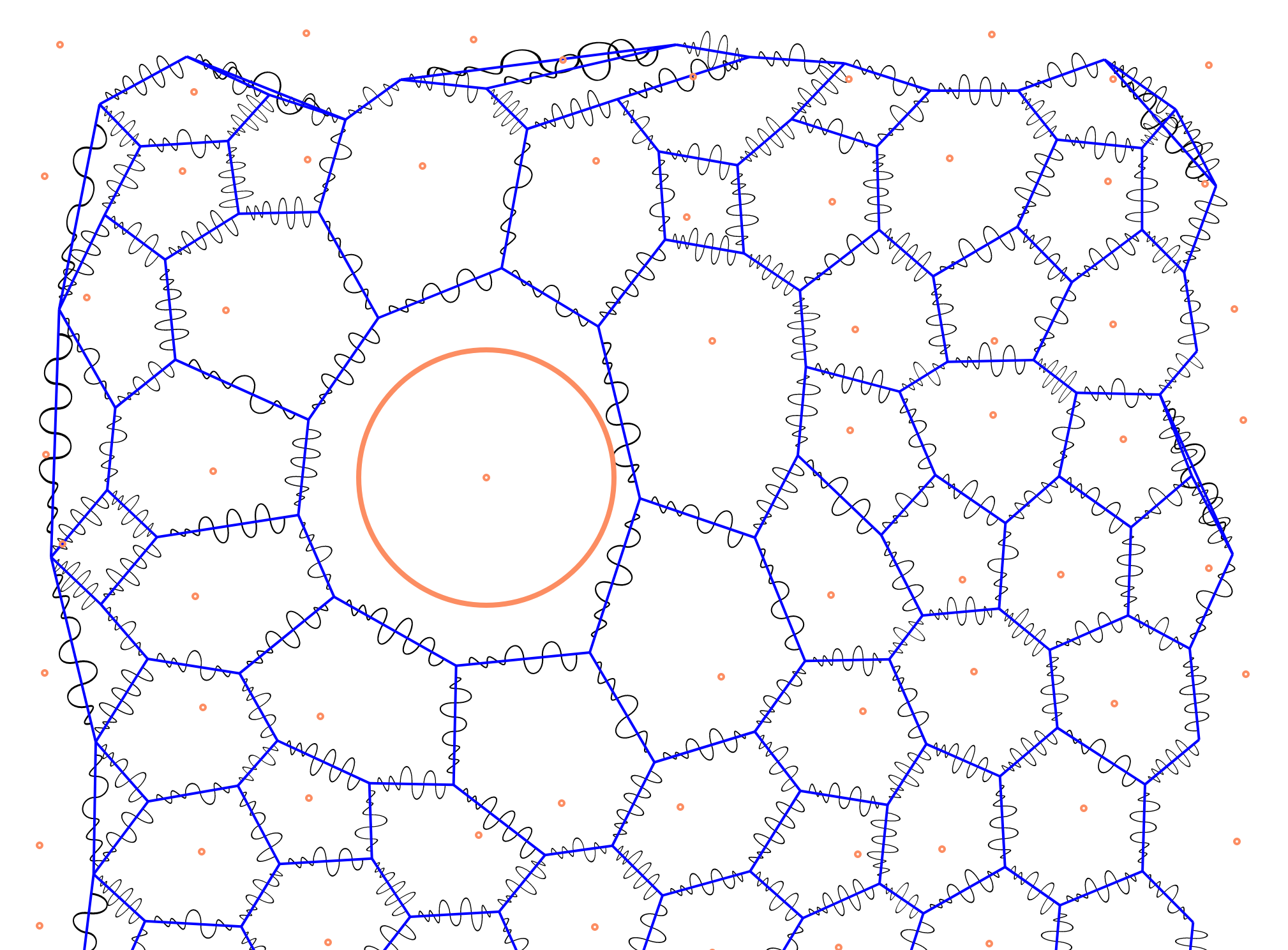
Then, using a kd-tree, I identified the whimsy piece’s nearest-neighbors and connected it back to the rest of the puzzle. Here’s a cat!

And, finally, I took these files over to NYC Resistor and lasered them.
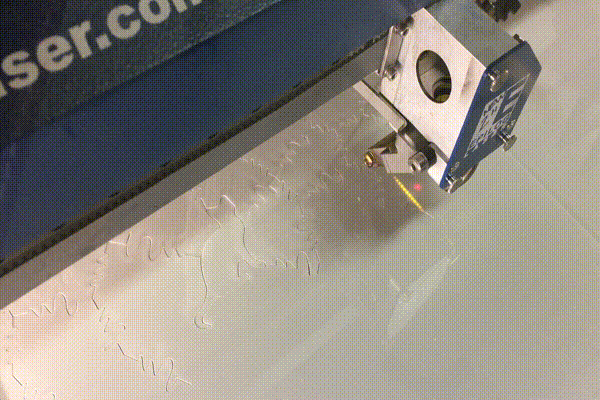

It took a group of us about ninety minutes to solve the cat puzzle. Not bad for four days’ work!
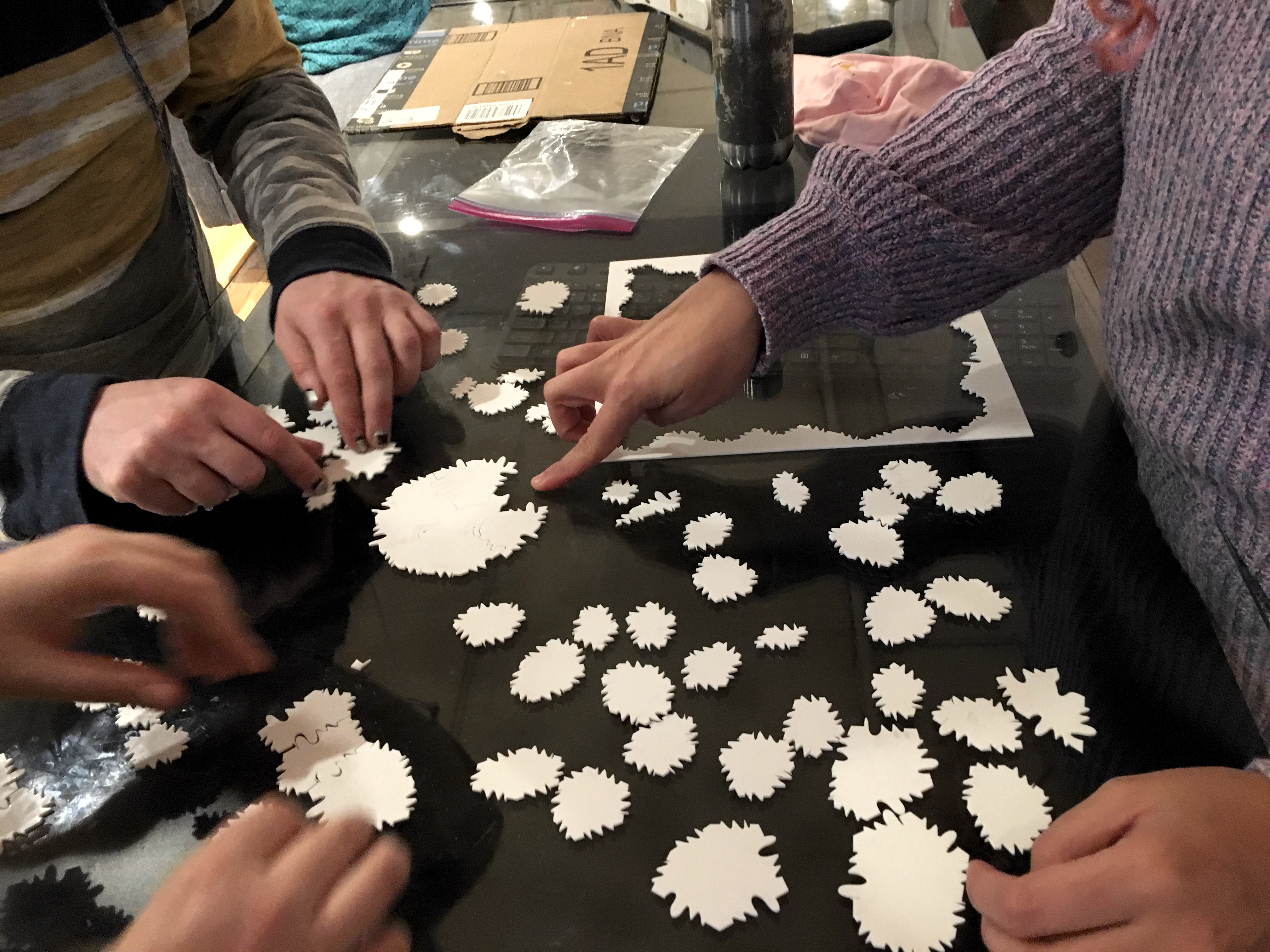
All of the code is available on Github at bonniee/svg-puzzle-gen. (It’s my first Clojure program, so I’m sure there are plenty of non-idiomatic things happening there.)
Dependencies / thank-yous:
Testimonials from playtesters:

Want to get started with physical computing? Learn to program an Arduino and interact with the physical world on Sunday, January 21st! In our Intro to Arduino: Sensors and Input/Output class, we’ll cover an introduction to Arduino and learn how to manipulate outputs based on sensor inputs.
